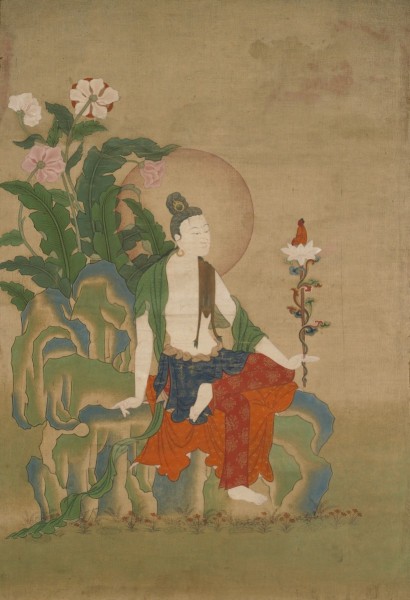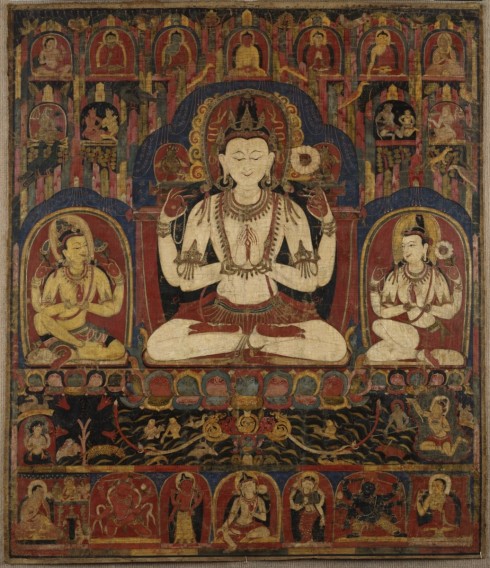Eastern Tibet, 18th century; pigment on cloth with silk mount; 39 3/8 x 20 3/4 x 1/2 in.; The Rubin Museum of Art, New York, C2008.9.
Shadakshari Triad and Other Deities
Tibet, early 12th century; pigment on cotton; 34 x 29 3/8 in.; The Walters Art Museum, Baltimore, Promised gift of John and Berthe Ford, F.120.
Comparing the painting on the left with the much earlier Shadakshari Triad reflects the development of Tibetan art over time. The earlier painting has a symmetrical composition, and the hierarchically scaled figures are stylized and iconic. Buddhas, bodhisattvas, and other attendant figures appear in rows above and below. White in color, adorned with typical bodhisattva ornaments and attributes, Avalokiteshvara here prominently displays his Indian heritage in a Tibetan context. In contrast, the more naturalistic figure on the left—situated in a recognizable landscape setting—reveals the impact of Chinese pictorial traditions, which began to influence Tibetan painting in the 15th century.





